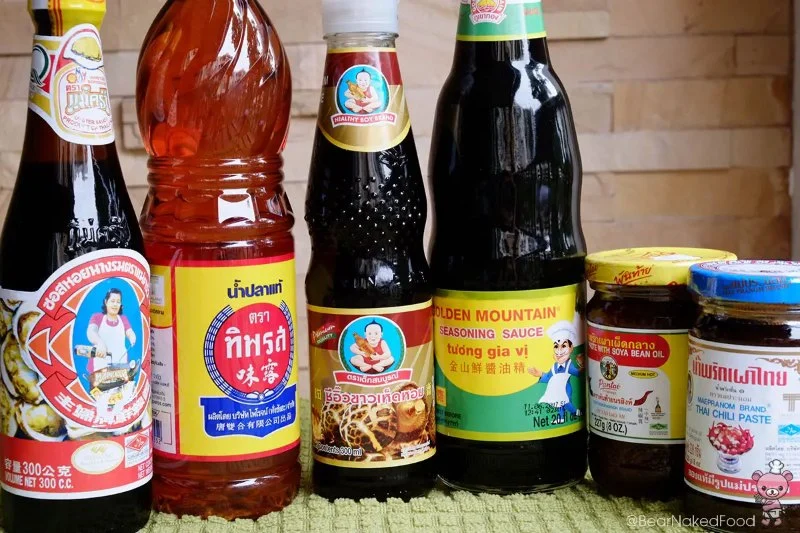
The Key Differences Between Soy Sauce and Fish Sauce in Thai Cuisine
When it comes to Thai cuisine, two key ingredients that often come into play are soy sauce and fish sauce. Though they both serve as savory, umami-rich liquids that enhance the flavor of dishes, they are distinct in both taste and application. Understanding the difference between soy sauce and fish sauce will help you cook with greater confidence and accuracy, ensuring your Thai dishes taste authentic and vibrant. Let’s explore the nuances of each and discuss when to use them in Thai cooking.
pgsqlCopy code1-What is Soy Sauce? Origins and Flavor Profile
Soy sauce is a fermented liquid made from soybeans, wheat, salt, and water. Originating in China, it has spread across the globe, becoming a staple ingredient in various cuisines, including Thai cooking. Soy sauce has a salty, savory taste with a slight sweetness, which makes it an essential component in marinades, stir-fries, and sauces. There are different varieties of soy sauce, such as light soy sauce and dark soy sauce, each offering a unique flavor profile.

Check In Thai Cuisine
MiddleboroughPlymouth CountyMassachusetts
321B W Grove St, Middleborough, MA 02346, USA
2-What is Fish Sauce? Origins and Flavor Profile
Fish sauce, on the other hand, is a fermented condiment made from fish (usually anchovies) and salt. It is commonly used in Southeast Asian cuisines, including Thai, Vietnamese, and Cambodian cooking. Fish sauce has a much stronger, more pungent aroma than soy sauce, with a rich, salty flavor and a deep umami character. It plays a central role in creating the signature taste of many Thai dishes like pad Thai, som tum (green papaya salad), and Thai curries.
3-When to Use Soy Sauce in Thai Cooking
While fish sauce is the go-to seasoning for authentic Thai dishes, there are specific instances when soy sauce can be used as a substitute or complement. Soy sauce can be used in stir-fries, noodle dishes, and even in some Thai soups, especially if you prefer a milder flavor. Here are a few situations where you might reach for soy sauce:
- Vegetarian Dishes: Since fish sauce is not suitable for vegetarians, soy sauce is often used as a substitute for umami in vegetarian Thai recipes.
- Marinades: Soy sauce works well in marinades for grilled or stir-fried dishes, such as Thai-style BBQ chicken or beef.
- Balance in Sauces: Some Thai recipes call for a balance of soy sauce and fish sauce, with soy sauce providing the saltiness and soy-based sweetness.
4-When to Use Fish Sauce in Thai Cooking
Fish sauce is irreplaceable in many traditional Thai dishes due to its deep umami flavor. It is particularly suited to Thai recipes that require a more robust, savory seasoning. Fish sauce enhances the complexity of flavors in dishes and is often used in combination with other ingredients like lime juice, chilies, and sugar. Here’s when to use fish sauce:
- Salads and Dressings: Fish sauce is the main ingredient in Thai salad dressings, such as those for som tum (papaya salad) or larb (Thai minced meat salad).
- Curries: Thai curries, especially red, green, and massaman, rely on fish sauce to build their complex, savory flavors.
- Dips: Fish sauce is key in making dipping sauces for Thai appetizers like spring rolls and satay.
5-Soy Sauce vs Fish Sauce: How to Swap and Substitute
While soy sauce and fish sauce are not directly interchangeable, you can swap them in certain situations depending on your flavor preferences and dietary restrictions. If you are looking to replace fish sauce with soy sauce, consider adding a bit of lime juice or vinegar to mimic the tartness that fish sauce provides. Conversely, if you are replacing soy sauce with fish sauce, you might need to adjust the amount of fish sauce you use since fish sauce tends to be saltier and more potent.
6-A Real-World Example: Cooking Thai at Home
One of our readers, John, loves to experiment with Thai recipes at home. He recently wanted to make a traditional pad Thai but realized he was out of fish sauce. Instead of giving up, he used soy sauce as a substitute and added a squeeze of lime to help balance the flavors. The result? A delicious pad Thai with a slightly different but still enjoyable flavor. John’s experience highlights how soy sauce can be a great alternative when you’re in a pinch, but also shows how important it is to understand the unique qualities of each ingredient to get the best flavor in your Thai dishes.
7-Tips for Mastering Thai Flavors with Soy Sauce and Fish Sauce
To truly master Thai cooking, it’s important to experiment with both soy sauce and fish sauce in different dishes. Here are some tips to enhance your Thai cooking skills:
- Start with small amounts: Both soy sauce and fish sauce are potent, so start with a small amount and taste as you go to avoid overpowering the dish.
- Balance flavors: Thai cuisine is all about balancing salty, sour, sweet, and spicy. Use both fish sauce and soy sauce in combination with ingredients like sugar, lime, and chilies for the perfect flavor profile.
- Try different varieties: Explore different types of fish sauce and soy sauce to discover the variations in flavor and how they work in different recipes.
Conclusion
Whether you are using soy sauce or fish sauce, both ingredients play a crucial role in bringing out the unique flavors of Thai cuisine. Understanding when and how to use each one can help you create more authentic and flavorful dishes. If you’re interested in exploring the full range of Thai ingredients, be sure to visit Thai Food for top-quality products and helpful cooking tips.




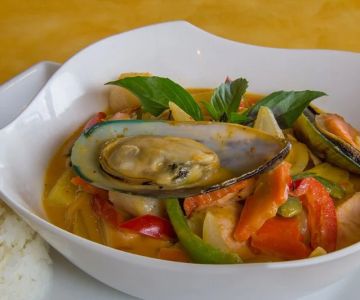
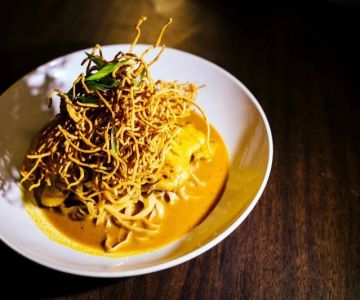

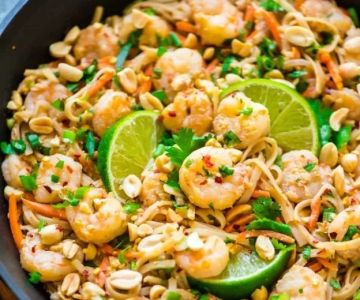
 Thai House Restaurant and Sushi Bar4.0 (220 reviews)
Thai House Restaurant and Sushi Bar4.0 (220 reviews) Pho Thai4.0 (270 reviews)
Pho Thai4.0 (270 reviews)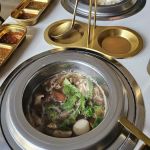 La Kang Hot Pot5.0 (24 reviews)
La Kang Hot Pot5.0 (24 reviews) Bangkok Kitchen Manchester4.0 (106 reviews)
Bangkok Kitchen Manchester4.0 (106 reviews) Authentic Thai by Perri4.0 (159 reviews)
Authentic Thai by Perri4.0 (159 reviews) Spicy Lime4.0 (166 reviews)
Spicy Lime4.0 (166 reviews) How to Make Thai Beef Jerky (Neua Dad Deow) at Home
How to Make Thai Beef Jerky (Neua Dad Deow) at Home Thai Food for Apartment Living: Simple, Flavorful & Budget-Friendly
Thai Food for Apartment Living: Simple, Flavorful & Budget-Friendly How to Make Low-Carb Thai Food Without Losing Flavor
How to Make Low-Carb Thai Food Without Losing Flavor The Difference Between Thai Street Food & Restaurant Thai in America
The Difference Between Thai Street Food & Restaurant Thai in America The Best Thai Food Recipes for a Mid-Week Reset Meal – Flavorful & Easy Thai Dishes
The Best Thai Food Recipes for a Mid-Week Reset Meal – Flavorful & Easy Thai Dishes The Best Thai Food Restaurants in St. Louis for Authentic Thai Cuisine
The Best Thai Food Restaurants in St. Louis for Authentic Thai Cuisine